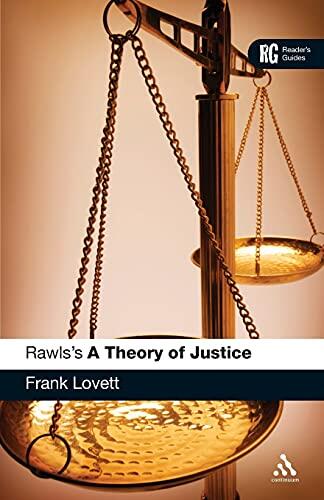
Rawls's 'A Theory of Justice': A Reader's Guide
还没有评分
History
Philosophy
格式
平装书
页数
176
语言
匈牙利语
已发布
Jan 6, 2011
出版商
Continuum
ISBN-10
0826437818
ISBN-13
9780826437815
描述
In this detailed exploration of Rawls's influential work, Frank Lovett offers readers a thorough understanding of the concepts that underpin "A Theory of Justice." The book breaks down the complexities of Rawls's ideas, making them accessible to both novice and seasoned readers. Lovett frames the discussion around key themes such as justice, fairness, and the original position, inviting readers to engage deeply with Rawls's philosophical framework.
Lovett's guide not only elucidates Rawls's arguments but also situates them within the broader context of political philosophy. By drawing connections to contemporary debates, the author encourages readers to consider the relevance of Rawls's theories in today's society. The book’s structure is designed to facilitate a step-by-step comprehension, allowing readers to absorb and reflect on each element of Rawls's thought.
Additionally, Lovett offers critical insights and interpretations, prompting readers to grapple with the implications of Rawls's work. By presenting various perspectives and critiques, the guide enriches the reader's understanding while fostering an environment of intellectual curiosity.
In crafting this reader's guide, Lovett has effectively created a valuable resource that encourages thoughtful engagement with one of the most significant philosophical texts of the 20th century. It serves not only as an introduction but also as a companion for those wishing to deepen their understanding of justice and its application in the world.
Lovett's guide not only elucidates Rawls's arguments but also situates them within the broader context of political philosophy. By drawing connections to contemporary debates, the author encourages readers to consider the relevance of Rawls's theories in today's society. The book’s structure is designed to facilitate a step-by-step comprehension, allowing readers to absorb and reflect on each element of Rawls's thought.
Additionally, Lovett offers critical insights and interpretations, prompting readers to grapple with the implications of Rawls's work. By presenting various perspectives and critiques, the guide enriches the reader's understanding while fostering an environment of intellectual curiosity.
In crafting this reader's guide, Lovett has effectively created a valuable resource that encourages thoughtful engagement with one of the most significant philosophical texts of the 20th century. It serves not only as an introduction but also as a companion for those wishing to deepen their understanding of justice and its application in the world.